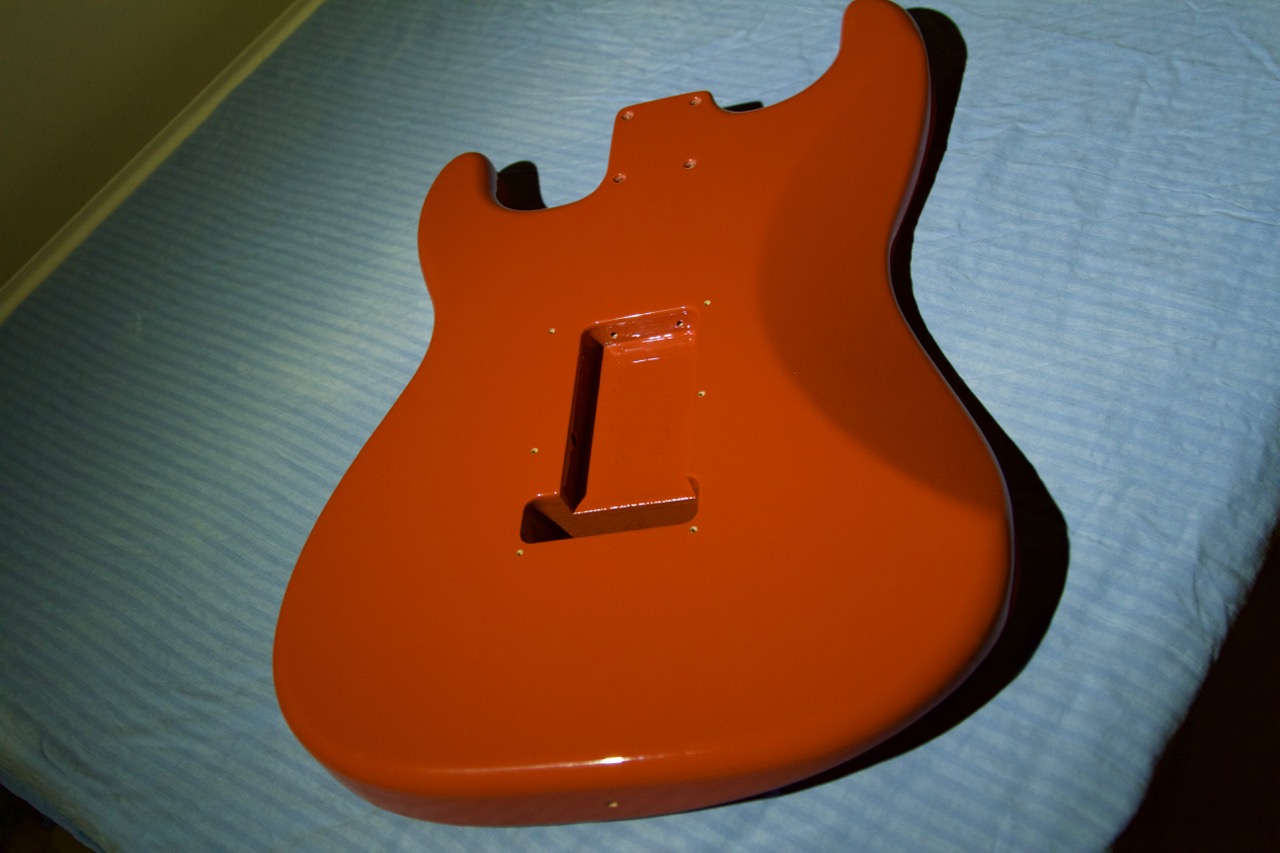Fender “Classic Player 1959” - part 1: Introduction, finding a neck and a body

1959 was a strange year for Stratocasters as Fender gradually transitioned the fretboards from maple to rosewood, pickguards from 1-ply to 3-ply and the drilling pattern from 8-hole to 11-hole. According to various sources, pretty much any combination of those three could’ve happened during the summer as Fender was putting guitars together from whatever parts they had in stock at the time.
While the possibility of having a wild, non-standard configuration such as a rosewood fretboard with an 8-hole 3-ply pickguard would not have been completely impossible, such genuine examples are fantastically rare. Top that by throwing in a paint color requiring custom order from factory and you have a real unicorn of a guitar.
That sounds like a really fun source of inspiration for a partscaster build!
Of course, staying true to a vintage style is a noble idea, but on some occasions slavishly following 1959 specifications may detract from the actual playing experience. For an instrument not meant to just hang on a wall, it’s probably a good idea take a bit of artistic freedom for the sake of playability.
That’s why I find the idea behind Fender’s Classic Player series so attractive - creating a guitar with vintage looks and sound, but with modern ergonomics. Hopefully I can build something with a similar feel to it.
Now - let’s get the “Classic Player 1959” partscaster project rolling!

Undoubtedly, the neck of a guitar is the most important component of them all. Besides the strings, it’s the one a player interacts the most with. If the neck doesn’t feel right, it will take the fun out of the whole guitar no matter how good the other parts are. The neck is also the part which ultimately gives the instrument its identity by carrying the serial number, brand and model name on the headstock.
My two Squiers have 7.25" and 9.5" radius fretboards and the flatter fretboard does feel more comfortable in my hand. Vintage and reissue models typically have the rounder fretboard, whereas the flatter ones can be found on modern standard models and some select special models.

While I was going through classifieds on a forum, I came upon a listing for a neck from a 2010 Fender Classic Player 60s Stratocaster, which seemed to be exactly what I was looking for. It has a rosewood fretboard with a modern 12" radius and medium jumbo frets. However, it still retains the vintage looks by having the truss rod at the heel. The seller was very cool acommodating with my silly questions, so we made a deal and just two days later had the neck in my hands.


Even without being attached to a body, holding the neck in my fretting hand feels fantastic. Although it’s not that much different in dimensions compared to the 9.5" radius Squier SE neck, it still feels so much more streamlined.

Apart from a few very minor fingernail indentations on the fretboard, it’s in absolutely perfect condition. I got it without the tuners and the string tree but with the original tuner bushings still in place.
On the back of the headstock the glossy urethane coating has an outline left by the original vintage style tuners. Since I intend to use the exact same style of tuners, that’s a non-issue. Naturally, the old screw holes should also be in correct positions. The tuner mounting screws may have been slightly over-torqued at the factory because the wood is a bit rough around the edges of the holes but the threads are fine.
With the issue of getting a neck sorted out, my next step was to find a body that follows the same vintage motif. Because I’m a huge fan of Dire Straits and Mark Knopfler, a very important criterion is of course that it needs to be red. Fortunately, it didn’t take too long for me to find the right one - a fiesta red alder body from a 2015 Classic Series 50s. It has a vintage-style S/S/S routing without the shoulder in the control cavity, holes drilled for an 8-screw pickguard and a 6-point tremolo. I’m assuming that it must be a factory spare part because it looks absolutely brand new - not even a hint of there ever being any hardware installed to it.


Yes, yes - I know. Knopfler’s 1961 Stratocaster isn’t that exact shade of red. I’m OK with that.
There was a fair amount of dried up white buffing compound and sawdust in the cavities but after loosening it up a bit with a soft brush, it all came out nicely with a vacuum cleaner. The neck was quite clean to begin with, so I only wiped it lightly with some lemon oil.
Some measuring and test fitting of the body and neck confirmed that there shouldn’t be any major problems joining the two primary components. All four holes line up as expected, the neck sits in the pocket with just the right amount of space to allow for some adjustment.
Next part - hardware! Stay tuned.